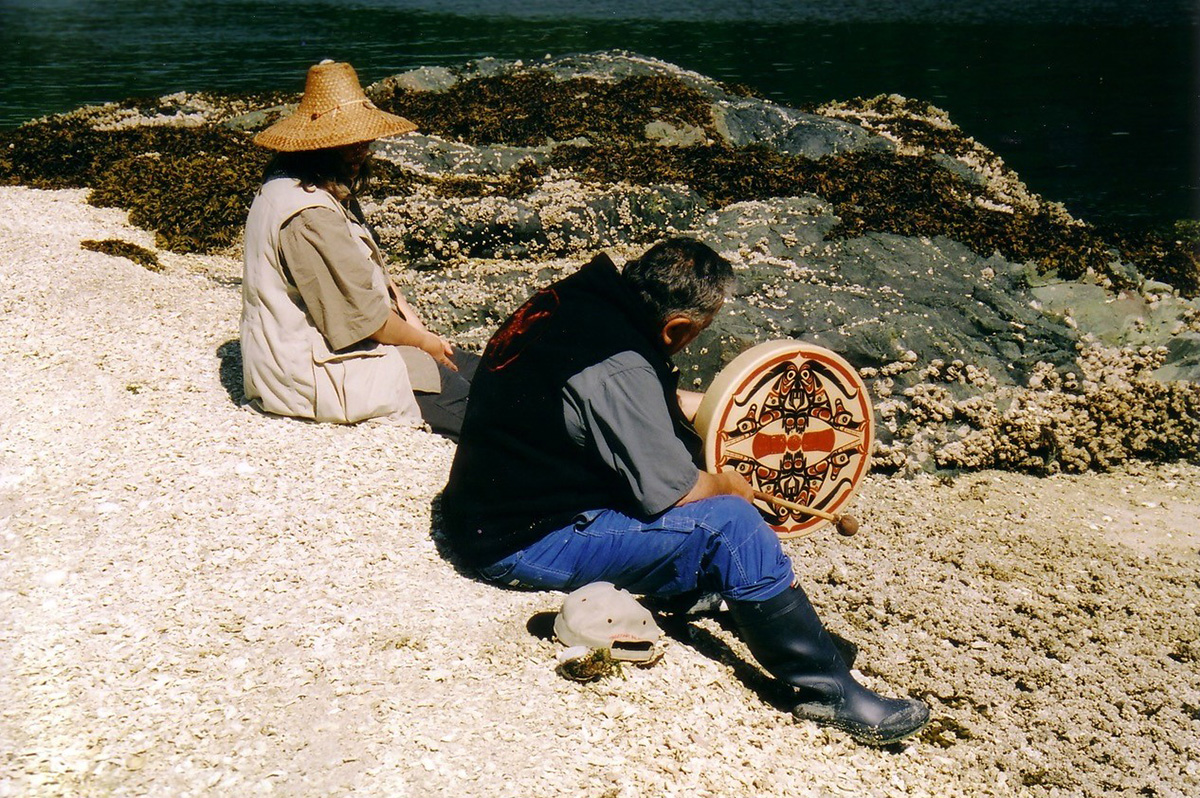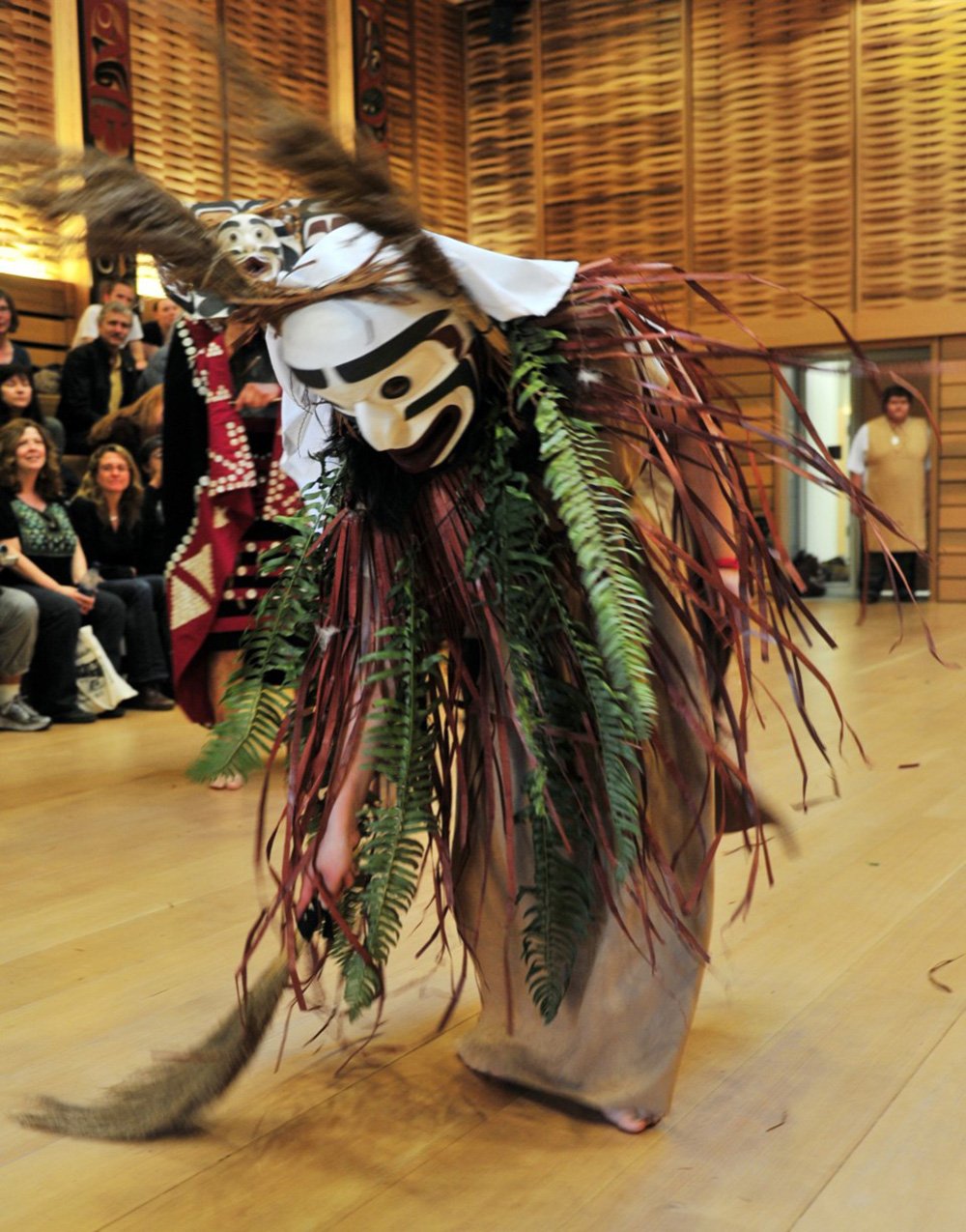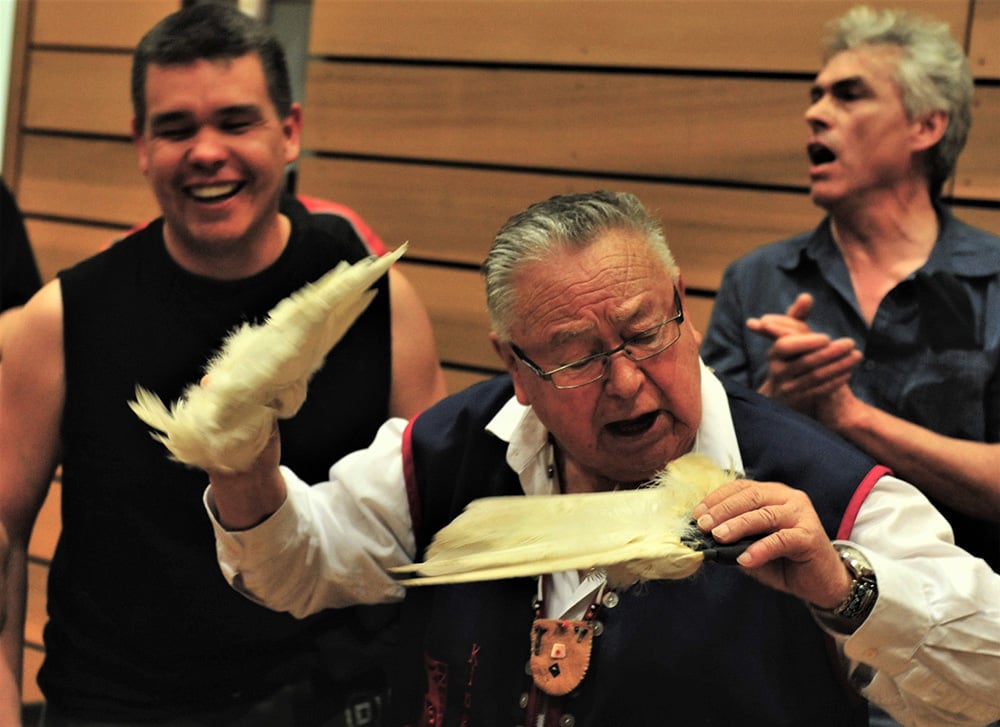[Editor’s note: This is the second of two parts. Find the first here.]
Chief Adam Dick was the boy who lived. He was the child in the bullrushes. Whether you prefer J.K. Rowling or the Bible, there are many legends across many cultures that tell of children hidden from malign forces intent on destroying a people and a way of life — heroes who must survive before re-emerging to continue the battle. On the west coast of B.C., Chief Adam Dick was destined to be that kind of warrior.
His chieftain name is Kwaxsistalla Wathl’thla. Kwaxsistalla means “The smoke from his big fire reaches around the world;” Wathl'thla means “the late.” Chief Dick died of heart failure last year at age 89. He was a chieftain of the Kawadillikall Clan of the Dzawatainuk Tribe of the Kwakwaka’wakw First Nation, and took with him an unmatched knowledge of Kwakwaka'wakw music, culture and practice. But before he died he succeeded in passing much of his knowledge along, and in the process helped transform our common understanding of life on the coast before Europeans arrived, and before the residential school system devastated Indigenous families.
“We would have lost the knowledge,” says Kim Recalma-Clutesi, also known as Ogwiloqwa of the Qualicum First Nation. “For six generations children in that area were removed to go to residential school. The only way to transmit that knowledge is to actually live there with the old people. He was the last contact with those really old teachings.”
If you picture the residential school system as a giant meteor, an obliterating force that wreaked havoc in First Nations communities across Canada, you might assume all was lost. But the impact did leave survivors. Adam Dick was one. It is no accident that young Adam, a descendant of clan chiefs, was spared. His deliverance was the collective act of his community.
Adam Dick was born in 1929 near Kingcome Inlet. “His mother had a prophetic dream when she was carrying him,” says Ogwiloqwa, Dick’s long-time partner of 26 years. “In that dream our Maker brought Adam to her and instructed her to look after him. And if a prophetic dream like that takes place our custom is to immediately surround that child with people who have traditional training. A plan is made even before they are born on how they will be brought up. And because he was born shortly after so many arrests had taken place from the potlatch prohibition time, the clan chiefs and the potlatch chiefs gathered and laid out a very strict training for him. So he was trained in many areas. Where someone might have been trained in stewardship, somebody else might be trained as a speaker — he was trained in everything.”
He was also hidden from the authorities rounding children up for the residential schools. Like an infant prince threatened by a usurping tyrant, young Adam was spirited away to safety. “As a child he lived with his aging grandparents off the grid in a little shack that was meant for people to live in only for a couple of weeks in winter months to gather clams,” says Ogwiloqwa. “Their only transportation was a dugout canoe and they lived off the land.”
That traditional upbringing made Chief Dick a rare individual — a link to a way of life forgotten not only by Europeans but by much of the First Nations community as well. “You don't interrupt your way of passing things on for four to six generations without having some kind of an impact,” Ogwiloqwa says.
The chief's knowledge, she says, was awe-inspiring. “He couldn't remember where he put his glasses for anything,” she says, “but if you spoke about our culture or anything to do with our spiritual or natural world, he knew everything.”
Much of his knowledge was transmitted via song. “One day he was moving a boat from Campbell River to Victoria,” she recalls. “He was in his 60s by then. He sang over 500 songs that day. He sang the entire time. And that was nowhere near the entire repertoire that he had. We recorded a lot of it, but nowhere near what his entire repertoire was.”
The songs were not simply for entertainment. “These were songs to help children understand how important and how sacred food gathering was,” Ogwiloqwa says. “They were instructional, they were historical, some of them gave spiritual origins. They were ditties to help the children get into a good space to be doing this hard work. It gave them a sense of identity, it gave them a purpose. But it also gave them really strict teachings and lessons. You don't just help yourself to everything and take what you want. You must think of everything else that has to eat. There were songs telling the bears, the grizzlies, to stay away as we are gathering the crab apples, and saying, 'We'll leave some for you.'”
“Kwaxsistalla's dream was to have the children walk into the community singing these little ditties that had to do with gathering, rather than singing 'ABC' or something.”
Kwaxsistalla's revelations were by no means restricted to traditional music and culture. Over the years a steady stream of academics and graduate students came to tap his knowledge of the natural world, and to ask for his help in revising the history of the region. To the end of his life, Ogwiloqwa says, “He was still stumping specialists in every area — geomorphologists, botanists, biologists, marine biologists, linguists, anthropologists.”

As a result, many long-held beliefs about First Nations practice have been altered. It was once thought local clans simply gathered wild berries, but Kwaxsistalla revealed that the berry plants were actually transplanted and cultivated. Crab apple trees were also spread along the coast because they were a common dowry gift. And a recent paper co-authored by SFU's Dr. Dana Lepofsky reveals that Indigenous peoples were cultivating butter clams on B.C.'s west coast at least 3,500 years ago. That study was launched when Chief Dick first revealed to researchers the existence of loqiwey, the stone structures that were used to create “clam gardens.” After Kwaxsistalla explained what they were, Ogwiloqwa says, “People started looking for them up and down the coast. They found them from the Columbia River way up to Alaska.”
Long-time friends and collaborators Dr. Nancy Turner of the University of Victoria and Dr. Doug Deur of Portland State University would bring groups of graduate students to meet and learn from him. “'Adam’s School' was our name for the space he and Kim created for us to learn from Adam,” Dr. Turner says. “He was a treasure trove of knowledge and wisdom relating to the land, and he was a born teacher.”
“Kwaxsistalla would be sitting with his eyes closed tight,” Ogwiloqwa recalls. “You could see his leg moving and he was just pounding with his hand in the air. And he'd start to sing a song: 'All right, that's the song that cooks the salmon berries.' And he would start talking about how the salmon berries were a marker for whether there's been a good sockeye run or not. There wasn't one student who came through where he didn't find them a song.”
“I and my students spent many memorable hours with him and Kim,” Turner says, “out on the lands and waters around Vancouver Island, the Broughtons and Kingcome Inlet, listening to his songs and stories and watching his demonstrations.”
“For Adam,” Ogwiloqwa says, “what we were doing was recreating a family so he could teach as he had learned.”

Campbell River School District 72 began a Kwakwaka'wakw language program, for which Chief Dick was the principal source; he was also the principal cultural advisor for the Native Participation Committee at the Commonwealth Games of 1994.
Linguist Randy Bouchard also found Chief Dick to be an invaluable resource. Bouchard is one of the editors of an updated translation of the 1895 book Indian Myths and Legends from the North Pacific Coast of America by German researcher Franz Boas (Talon Books). By consulting with Chief Dick, Bouchard was able to clarify enough previously misunderstood passages to delete 1,200 footnotes.
“We all understood our world would change dramatically when he left us,” Ogwiloqwa says. “He had severe health problems, but he was vital and working up until the day he left us. But it's almost like the Earth opened and our encyclopedia was swallowed up. It's a little bittersweet to speak of it. But I am just grateful that late in his life we were able to understand how important that knowledge was.”
Ogwiloqwa is now working with Dr. Deur and Dr. Turner on a book about his life and teachings. There has been a film, Smoke From His Fire, which aired on Knowledge Network and APTN, and another film Singing Through the Seasons, is in the works. And she has partnered with filmmaker Marie Burke on the Ninogaad Knowledge Keepers Foundation to organize and disseminate the information.
“I think of him and his generous teachings every day,” Dr. Turner says. “I know he intended for his knowledge to be passed on into the future, and I feel very honoured that he was so kind in sharing so much with me.”
“He made a childhood promise to carry on what was lost,” Ogwiloqwa says. “We are very grateful for the legacy he left us.”
Read the first in this two-part series here. ![]()
Read more: Indigenous, Education
















Tyee Commenting Guidelines
Comments that violate guidelines risk being deleted, and violations may result in a temporary or permanent user ban. Maintain the spirit of good conversation to stay in the discussion.
*Please note The Tyee is not a forum for spreading misinformation about COVID-19, denying its existence or minimizing its risk to public health.
Do:
Do not: